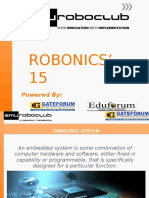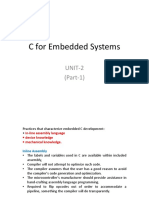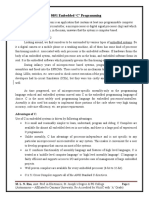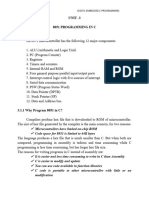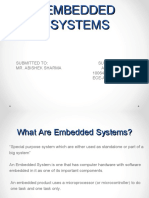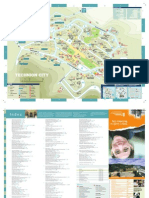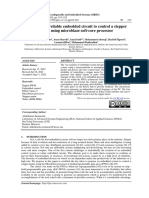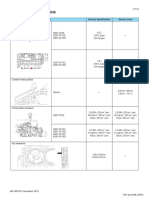0% found this document useful (0 votes)
4 views16 pagesLecture 2
The document provides an overview of embedded systems programming, focusing on development tools like Microchip Studio, firmware architecture, and programming languages suitable for embedded systems. It discusses the layered architecture of firmware, the benefits and drawbacks of layering, and the process of converting programming code into hex files for microcontrollers. Additionally, it includes practical examples of GPIO access, PWM generation for motor control, and coding techniques for AVR microcontrollers.
Uploaded by
karim fawzyCopyright
© © All Rights Reserved
We take content rights seriously. If you suspect this is your content, claim it here.
Available Formats
Download as PDF, TXT or read online on Scribd
0% found this document useful (0 votes)
4 views16 pagesLecture 2
The document provides an overview of embedded systems programming, focusing on development tools like Microchip Studio, firmware architecture, and programming languages suitable for embedded systems. It discusses the layered architecture of firmware, the benefits and drawbacks of layering, and the process of converting programming code into hex files for microcontrollers. Additionally, it includes practical examples of GPIO access, PWM generation for motor control, and coding techniques for AVR microcontrollers.
Uploaded by
karim fawzyCopyright
© © All Rights Reserved
We take content rights seriously. If you suspect this is your content, claim it here.
Available Formats
Download as PDF, TXT or read online on Scribd
/ 16
